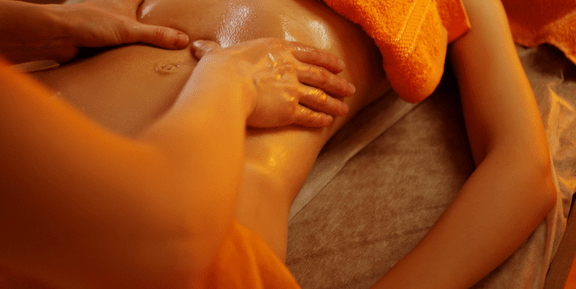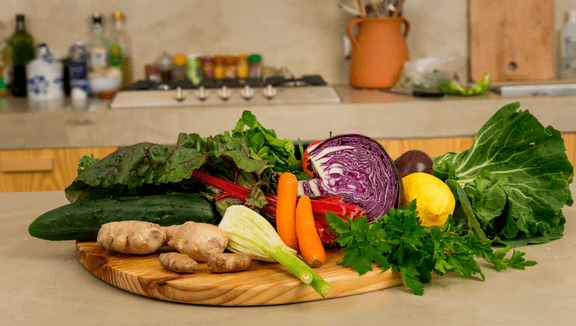
by Bryden McGregor, FGHG Osteopath
The mind body connection has really caught my interest lately. It’s something that is poorly understood but can have a profound effect on your health. Take depression as an example. There are signs that most people can automatically identify with like hopelessness, sadness and anxiety, but depression can also cause unexplained physical symptoms or worsen the symptoms you already have, like pain. The two are closely linked and simply put, pain can be depressing and depression causes and intensifies pain.
In fact, vague aches and pains are often the presenting symptoms of depression, highlighting the mind-body connection. These symptoms can include back pain, gastrointestinal problems, chronic joint pain, limb pain, tiredness, sleep disturbances, psychomotor activity changes and appetite changes. Psychoneuroimmunology is what scientists are now calling the field that explains how our mind, our brain and other systems in the body all interact to have an impact on our health. Thanks to developments in MRI technology particularly over the last 5-10 years, we can actually look at what’s going on in the brain while it’s happening and see the connection between mind and body.
How the stress response works
The mind-body connection can be clearly seen when we look at the stress response (fight or flight). The stress response developed to help us deal with danger, like when a Saber tooth tiger is chasing you. When the stress response is triggered a lot of physiological processes are set off to help your body cope with the situation. Once we are stressed glucocorticoids are released to help mobilise energy, inhibit storage of energy and suppresses immune function. Adrenaline is released, increasing blood pressure, heart rate, and respiratory rate. Extra blood is pumped to the muscles so you can get away from those shiny teeth. Sugars and fats pump into the bloodstream, your metabolic rate goes up, you start to feel hot and you sweat. Blood is diverted away from the skin and away from the gut due to adrenaline’s vasoconstrictor action, so your gastrointestinal system slows down. Your blood thickens and will clot faster than normal, which could be the difference between life and death if the tiger gets a hold of you. Your immune system is activated by pumping out inflammatory chemicals, so there is a short-term burst in immunity but long term is suppressed. And you become very focused.
The problem with the stress response
Unfortunately as smart as our bodies are, we do have to consider the fact that the evolution of technology and consciousness is far faster than that of physical adaptation. Adaptations are said to accomplish a goal, however the adaptation does not have to be, nor is it in many, many situations, optimal. We activate this stress response all the time through our modern lives, by anticipating future events or replaying past events, or by becoming overly angry and reactive to normal day to day events. We end up over activating this pathway, which can have a long-term cumulative effect that’s called allostatic load. Heart disease, diabetes, ulcers and growth problems for example, can then ensue.
In the brain, chronic stress will decrease glucose delivery to the hippocampus (limbic system: emotion, memory) and cortex (neocortex and prefrontal cortex: cognitive region) to probably divert it to the more reflexive brain regions (reptilian brain: survival). These effects are measurable not just in terms of physiological, metabolic effects and immune effects but also to the very DNA. The acceleration of the rate of ageing of the DNA can be seen, which is measured by the telomeres – little caps on the end of your chromosomes.
How to reverse the effects of the stress response
A chronically activated stress response is really how we accelerate the progression of chronic illness and the effects are also observable in the brain. Thankfully these changes seem to be able to be reversed. Meditation is fantastic, as is exercise, counselling, diet and manual body therapies. A combined approach is ideal, but exercise and osteopathy are two powerful treatments to get started on.
- Exercise
Exercise appears to have a similar action to an antidepressant, by acting on particular neurotransmitter systems in the brain and helping patients with depression to re-establish positive behaviours. 150 minutes a week of moderate-intensity activity or 75 minutes a week of vigorous-intensity activity is all that is needed. After just 25 minutes, your mood improves, you are less stressed, you have more energy – and you’ll be more motivated to exercise again tomorrow. A bad mood no longer becomes a barrier to exercise; it is the very reason to exercise.
- Osteopathy
An Osteopath is obviously not a psychologist, however depression has important physiological and anatomical components. Many physicians consider patients to be in remission when their acute emotional symptoms have abated, but residual symptoms—including physical symptoms—are very common and increase the likelihood of relapse.
Psychiatrists and primary care physicians are now beginning to recognise that even though symptom domains in the areas of motivation and physical illness are frequently part of depression, they are often ignored in the assessment of depression and subsequently, in the treatment goals. Often, pain is not included in the treatment goals because it is interpreted as a sign of a somatic illness. Pain and depression share common pathways in the limbic (emotional) region of the brain according to some research. In fact, the same chemical messengers control pain and mood. Many people suffering from depression never get help because they don’t realise that pain may be a symptom of depression. The importance of understanding the physical symptoms of depression is that treating depression can help with the pain – and treating pain can help with depression.
Osteopathic manipulative treatment (OMT) has been shown to improve cardiac indices, increase lymph flow rates through the thoracic duct, and decrease sympathetic tone in postoperative patients and those in intensive care. Another study has looked at how OMT can increase secretory IgA which provides our first line of defence against bacteria, food residue, fungus, parasites and viruses. A fancy way of saying there’s indications we can help with stress and actually improve immune function.
Osteopathy can also help to reduce some of the strains and stressors placed on your body in order to bring you back to equilibrium. Either through the postural compensations brought about from depression or through treating the pain-causing tissues that can lead to depression.
Posturally, there is often a shortening of the abdominal muscles and a tightening of the diaphragmatic arch which pulls the chest down and forward, limiting its ability to expand during breathing. Combined with medial rotation of the shoulders and internal rotation of the arms resulting in a increased kyphosis (mid back curve) that further restricts breathing. Without the support of the thoracic region, the head and neck will often move forward and down and further into collapse. Which can lead to follow on affects in the lower body. Through exercise prescription and treatment we can help resolve some of these extra stressors.
So yes Osteopathy can make a huge difference to your health and wellbeing, however, if we keep being overstimulated physically, psychologically or through anticipation (literally worrying ourselves sick) it will only offer short term relief. This short term relief however in the long term is not to be underestimated as it opens the gateways for new insights.

Bryden is passionate about restoring movement and function to help people achieve their optimal health. Through effective assessment, diagnosis and treatment, Bryden is able to guide an individual to a better understanding of their body and provide symptomatic relief. He uses a range of techniques including manipulation, massage, dry needling and stretching, as well as patient education and exercise prescription. He has a keen interest in treating a wide variety of musculoskeletal conditions affecting people of all ages, including pregnant women and babies.














